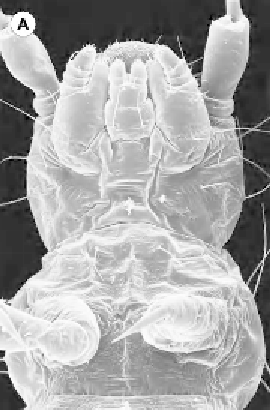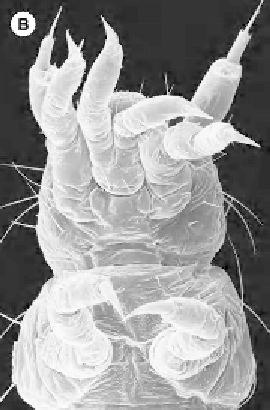Biology Reference
In-Depth Information
Figure 4.9
A) A ventral view of a wild type embryo of
Tribolium castaneum
. B) A ventral view show-
ing a homeotic mutation,
maxillopedia
, in which the maxillary and labial palps are modified into leg-
like appendages. C) A side view of a mature wild-type embryo. D) A side view showing the homeotic
mutant
cephalothorax
, which results in incorporation of the prothorax into the head and transformation
of the labial palps into antennae.
maxillopedia
and
cepahlothorax
are in the HOM-C complex and cor-
respond to
proboscipedia
and
sex combs reduced
in
Drosophila
.
(Photographs provided by Richard W. Beeman.)
(genes in different species that originated by descent from a single gene of the
last common ancestor) to those in
Drosophila
can be identified.
Beeman (1987)
showed that six loci of homeotic genes in a single cluster
(HOM-C) of
T. castaneum
contain elements homologous to the homeotic genes
in the Antennapedia and bithorax complexes of
Drosophila
. These genes map
along the chromosome in the same order from anterior to posterior as their
effects occur, but they occur in a single cluster rather than in two in
Drosophila
and with a different gene order (
Beeman et al. 1989, 1993a,b
).
Tribolium
with



